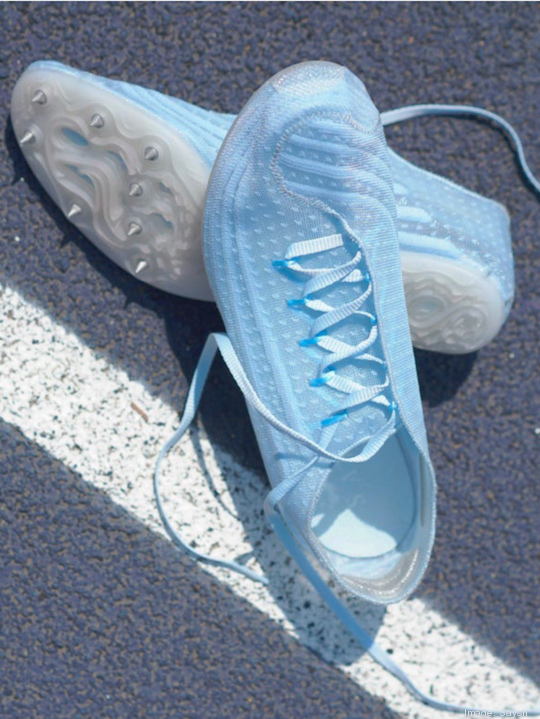
On Aug. 7, American Olympian Allyson Felix entered her final 400-meter race as the world's most-decorated woman track athlete.
Approximately 48.36 seconds later, Felix crossed the finish line as the most-decorated track athlete in the U.S..
“It was incredible,” said Mike Friton of Friton Design, one of several former-Nike designers and Portland companies that collaborated to create Felix’s “Spike One” track shoes in just six months.
Of course, Felix’s shoe brand is actually her own: Saysh, a women’s athletic-leisure shoe line Felix started with her brother, Wes Felix. The duo launched Saysh during the middle of the Olympic Trials in Eugene.
Friton believes Felix’s shoes are, at 3.9 ounces, the lightest on the track by about 30%.
“Make it light, make it fit and make it go the distance,” recited Friton. “Those are the three components that go into designing a good shoe.” The three principles are not original to Friton, but rather the principles taught by late mentor and Nike co-founder, Bill Bowerman.
Prior to opening his own company in 2012, Friton worked for Nike from 1979 to 2009, eventually as a senior innovator. Friton began working with Bowerman in his “secret lab” as a student athlete at the University of Oregon between 1977 and 1981.
While running for UO, Friton began making his own track shoes out of nylon fabric and, once, even Tyvek HomeWrap. “They didn’t hold up very well,” said Friton.
Once Friton joined Bowerman’s lab, he learned how to construct shoes that supported individual athlete needs. According to Larry Eisenbach, Friton’s adviser and former Nike colleague, Friton is “Bill Bowerman's living protege.”
Friton’s 30 years at Nike initiated his connection to Saysh. Nike once sponsored Felix but caught fire after she revealed the company declined to contractually guarantee her contract if she underperformed after giving birth. The subsequent uproar led to Nike policy changes.
Footwear Engineer and Saysh Product Lead,Tiffany Beers eventually reached out to Friton, with whom she worked on Nike’s Back to the Future Shoe and within the Innovation Kitchen. According to Friton, Beers had collaborated with Allyson Felix for Saysh, where the two women initially planned to create a leisure shoe.
Once the pandemic stalled the 2020 Olympics, they realized they could also make Felix's racing shoe instead of purchasing one from the shelf.
Friton’s initial shoe concept was the “sparkle shoe,” a simple, lightweight design similar to the Spike One, except it’s glittery to the effect of something from Cinderella.
“It just glows, you know,” said Friton, holding the shoes up to the light. “The cameras would just be a blur.”
The original concept presented to Felix incorporated a thin, sparkly, thermoplastic urethane film for the top of the shoe. She loved the concept, Friton explained, but they eventually decided to incorporate a monofilament knitted fabric, used as Saysh’s leisure shoe material.
“And that's where we ended up with these translucent shoes,” said Friton.
Friton said the cosmetic direction of the shoes came from Portland designer Natalie Candrian, who has worked for Nike and Adidas in the past.
Under Candrian’s lead, the final product comes in a sheer black, light-lavender or translucent color, with modest polyester embroidery on the sides. The shoe fabric consists of monofilament nylon, which is like “a really fine fishing line that’s knit together,” said Friton. In person, it’s more like an opulent, multilayer fabric that looks quite expensive.
The bottom of the shoe is a rigid, spike plate made from Pebax, an engineering plastic material Eisenbach helped engineer with Jared Mitchell of Framas, another Portland company. The bottom of the plate features replaceable ceramic spikes.
“The advantage for sprinters is that it takes quite a bit of energy to get up on your toe,” explained Friton. “Imagine if you're standing on your toe for five minutes, most people fatigue. But this puts you in an elevated stance.”
Friton is adamant that the design team’s goal of keeping the shoe simple and light provides an athlete with an advantage, if there’s any advantage to be had at all.
“It wasn't the shoe that made her perform so phenomenally,” said Eisenbach. “She had the worst lane possible in her 400 meter race, the very outside lane.”
Friton notes that when people wear a pair of shoes they believe will make them perform better, they generally do. However, he hopes he can use his expertise in shoe crafting to help more athletes realize their full potential.
Other local businesses that contributed to the Spike One include Hillsboro’s Ultimate 3D, BioMechanica, Hills Embroidery and Portland’s Evergreen Apparel Manufacturing.



